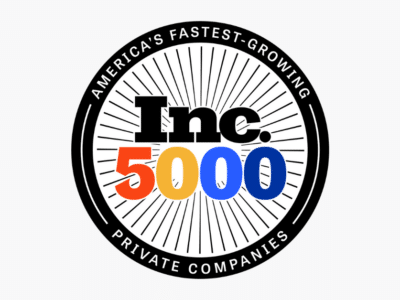4-minute read time
At its core, a compliance culture is a set of values, behaviors, and attitudes that guide everyone in an organization to adhere to policies, procedures, and regulations. It’s not just about ticking boxes or following rules.
It’s about cultivating a specific mindset to avoid the severe consequences of non-compliance, including fines and legal action, reduced revenue, and diminished customer trust.
Because the potential risks associated with non-compliance are significant, building a compliance culture should be a top priority for any organization, regardless of size, industry, or location.
To help you achieve this ambitious but advantageous goal, we’ve compiled the following actionable tips that will set you on the right path and help you build a compliance culture in your organization.
1. Understand Your Compliance Requirements
A fundamental step in creating a compliance culture is fully grasping the specific compliance requirements that apply to your organization. In the context of cybersecurity, you need to focus on the following types of compliance:
• Industry-specific regulations (HIPAA, PCI DSS, CMMC, etc.)
• General data protection and privacy laws (CCPA, GDPR, VCDPA, etc.)
• National and international cybersecurity standards (NIST, ISO 27001, etc.)
The trouble is that nearly 60 percent of business leaders need help to keep up with the rapidly evolving compliance landscape. That’s why a dedicated compliance team can go a long way in helping ensure that your organization remains up to date on its legal and regulatory requirements.
Outsourcing this function can be a viable and cost-effective option for smaller organizations that need more resources to build an in-house compliance team.
2. Compliance Starts from the Top Down
A strong compliance culture should always start with senior leaders setting the tone for the entire organization. To lead by example, senior leaders should:
• Regularly communicate the company’s compliance policies in clear, understandable terms.
• Demonstrate their understanding of and adherence to policies, showing that the rules apply across the board.
• Encourage open communication, where employees feel comfortable discussing compliance concerns and seeking guidance.
Leaders set the stage for the rest of the organization to follow suit by being the first and most enthusiastic adopters of compliance practices.
3. Incorporate Compliance into the Onboarding Journey
Integrating compliance into the onboarding process is crucial for building a compliance culture. Unfortunately, many organizations don’t give their employees the information they need.
32 percent of employees can’t find relevant information when they missed a compliance obligation.” – Gartner, 2021
From day one, employees need introductions to the organization’s compliance expectations. This process includes providing them with clear guidelines and any other resources they may need to understand their roles and responsibilities in maintaining a compliant workplace.
Training sessions should cover specific regulations and policies as well as the role of compliance in the overall success and integrity of the organization. It’s a good idea to assign a mentor or compliance officer to guide new hires through the initial stages of their employment, answering any questions they may have.
4. Incentivize Proper Compliance and Address Violations
One of the most effective ways to build a culture of compliance is to incentivize employees to adhere to policies properly. Examples of incentives for employees who consistently demonstrate their commitment to maintaining a compliant workplace include:
• Monetary bonuses tied to compliance performance.
• Public recognition or awards for outstanding compliance efforts.
• Opportunities for career advancement or professional development.
• Additional perks, such as flexible work hours or extra vacation days.
However, to be effective, the carrot approach must be paired with the stick, as explained in a 2011 study by Gneezy, Meier, and Rey-Biel, which focused on combining rewards and punishments.
Here, it’s important to remember that the stick’s length should always depend on the severity and frequency of the compliance violation so that the consequences employees feel are proportionate and fair.
Minor violations, especially those that have occurred for the first time, typically warrant only a formal warning or additional compliance training.
In contrast, severe or repeated violations should result in more serious consequences.
5. Harness the Power of Modern Technology
It takes a lot of work to document, track, and report compliance-related activities within an organization. When utilized effectively, modern technology can significantly reduce the burden of these tasks.
Many organizations are unaware that a whole ecosystem of compliance technology solutions is readily available to them. These solutions:
• Centralize and streamline the process of managing, monitoring, and reporting on compliance activities.
• Automate repetitive tasks, such as routing documents for review or obtaining approvals.
• Deliver customized, engaging, and up-to-date compliance training to employees.
• Provide insights into employees’ compliance performance and reveal potential areas for improvement.
By exploring and adopting these compliance technology solutions, organizations can strengthen their compliance culture and improve overall operational efficiency.
Compliance Is a Journey, Not a Destination
Building a robust compliance culture is an ongoing process, not a one-time project. Regulations change, new risks emerge, and organizations evolve. It’s necessary to continually monitor, assess, and adapt to these changes to maintain a strong compliance culture.
At Aligned Technology Solutions, we understand how time-consuming and challenging this journey can be. That’s why we’ve created some resources to help you grow and secure your business while you’re on this journey:
- CMMC Rulemaking Timeline in 2023
- Zero Trust Helps Maintain Compliance
- 5 Steps to Perform a Cybersecurity Risk Assessment
- 6 Cybersecurity Threats to Watch in 2023




